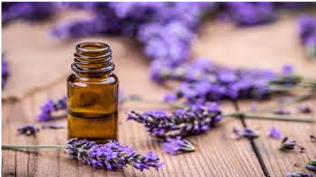Today’s herb is Lavender
 Its name derives from the Latin root “lavare,” which literally means “to wash”. The earliest recorded use of lavender dates back to ancient Egypt. There, lavender oil played a role in the mummification process.
Its name derives from the Latin root “lavare,” which literally means “to wash”. The earliest recorded use of lavender dates back to ancient Egypt. There, lavender oil played a role in the mummification process.
During later times, lavender became a bath additive in several regions, including Persia, ancient Greece, and Rome. These cultures believed that lavender helped purify the body and mind.
Lavender is a very versatile plant. People use lavender in many ways to promote good health and well-being.
In foods and beverages, lavender is used as a flavour component.
In manufacturing, lavender is used in pharmaceutical products and as a fragrance ingredient in soaps, cosmetics, perfumes, potpourri, and decorations.
Possible health benefits although not all scientifically proven can be:
- the fragrance of lavender oil promotes calmness and wellness and reduces anxiety and stress
- can have aromatic healing powers for cancer and dementia
- can help with insomnia, sleep disruptions and restlessness
- can have positive effects on the skin and hair conditions
- lavender oil might help treat alopecia (hair loss in patches)
- lavender oil has also shown beneficial results with eczema, acne, sunburn and some type of rashes
- may have antiseptic properties so will prevent growth of bacteria and help would healing
- due to its anti-inflammatory effects, lavender can improve bronchial asthma
- can lessen the effects of menopausal hot flushes on the body
- can help combat fungus growth so can be effective to help with athlete’s foot
Lavender is sold as dried flowers, oil, tea and you can also find culinary lavender for cooking,
Lavender should be safe for most people unless they suffer from allergies.
If in doubt, as ever, please seek advice from a healthcare or medical professional.
Today’s second herb is Liquorice root
 The word “licorice” refers to the root of a plant called Glycyrrhiza glabra. It’s native to Europe and Asia. The plant is actually classified as a weed in those areas.
The word “licorice” refers to the root of a plant called Glycyrrhiza glabra. It’s native to Europe and Asia. The plant is actually classified as a weed in those areas.
The early Egyptians loved licorice root. They used it in tea as a cure-all concoction. Licorice was later imported to China where it became an important herb in Chinese medicinal tradition.
Licorice root, also known as sweet root, is used mostly as a sweetener in candies and beverages.
People have also used licorice root for centuries for its medicinal benefits although these benefits have not been scientifically proven yet.
Potential health benefits of licorice root:
- licorice root can help with gastrointestinal problems due to the anti-inflammatory and immune-boosting properties of glycyrrhizic acid found in licorice root
- can help clear respiratory system by producing health mucus for the functioning of the lungs treat or prevent diarrhoea, especially following antibiotic treatment
- can reduce stress as licorice root can stimulate healthy levels of cortisol in the body
- can help with breast and prostate cancer treatment although more research required in these areas
- topical application can help with eczema due to anti-inflammatory properties
- can help fight tooth decay by killing bacteria in the mouth
Licorice root can be found as liquid extract and also as a powder. Licorice plant leaves are also crushed into a tea.
Licorice should be consumed in moderation as too much can lead to high blood pressure and irregular heartbeat.
Women who are pregnant or breast feeding should avoid all forms or licorice and so should people with hypertension.
If in doubt, as ever, please seek advice from a healthcare or medical professional.
